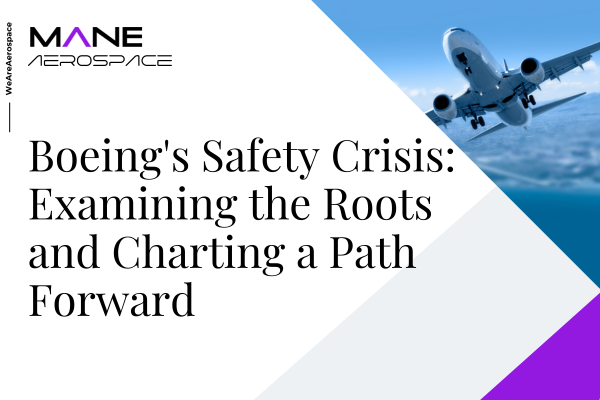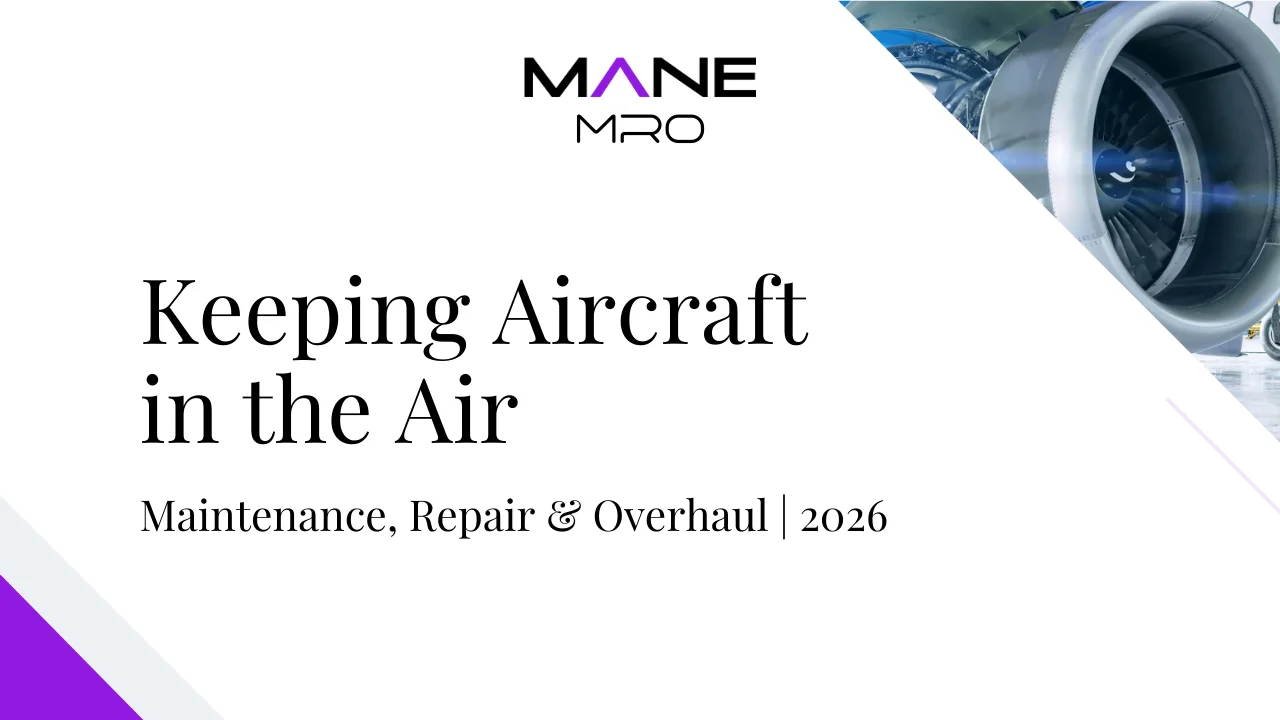
Boeing's Safety Crisis: Examining the Roots and Charting a Path Forward
13 Jun, 20245 minsBoeing's Safety Crisis: Examining the Roots and Charting a Path ForwardBoeing, the iconic Am...

Boeing's Safety Crisis: Examining the Roots and Charting a Path Forward
Boeing, the iconic American aerospace giant, has long been synonymous with engineering excellence and unparalleled safety standards in the aviation industry. However, in recent years, the company has found itself mired in a series of high-profile safety incidents that have severely tarnished its reputation and eroded public trust. From the tragic 737 MAX crashes to the recent door blowout on an Alaska Airlines flight, Boeing's once-sterling safety record has come under intense scrutiny. As the company grapples with these challenges, it is crucial to examine the underlying factors that have contributed to this crisis and explore the steps Boeing must take to restore its commitment to safety and regain the confidence of airlines, regulators, and the travelling public.
To understand Boeing's current predicament, one must look back to the late 1990s, when the company underwent a seismic shift in its corporate culture. The acquisition of rival McDonnell Douglas in 1997 marked a turning point, as Boeing's leadership increasingly prioritised financial metrics and cost-cutting measures over the engineering prowess that had long been its hallmark. The relocation of Boeing's headquarters from Seattle to Chicago in 2001 further underscored this change in focus, as the company sought to position itself as a global aerospace powerhouse driven by bottom-line considerations.
This emphasis on cost reduction and production efficiency created immense pressure to bring new models like the 737 MAX to market quickly, while simultaneously meeting ambitious financial targets. Engineers found their authority diminished, as business imperatives began to take precedence over technical expertise. The result was a culture that valued speed and savings over the meticulous attention to detail that had long been the bedrock of Boeing's success.
The consequences of this cultural shift became tragically apparent with the two fatal crashes of 737 MAX aircraft in 2018 and 2019, which claimed 346 lives and led to a worldwide grounding of the fleet. Investigations revealed that Boeing had rushed the MAX to market to compete with Airbus, while downplaying potential safety concerns and resisting regulatory oversight. The company's once-cosy relationship with the Federal Aviation Administration (FAA) came under intense scrutiny, as it became clear that Boeing had been given far too much latitude to certify its own aircraft.
Even as the MAX crisis unfolded, other safety issues began to emerge across Boeing's product lines. Quality control problems on the 787 Dreamliner led to delivery delays and regulatory investigations, while the recent door blowout incident on an Alaska Airlines 737 MAX exposed alarming lapses in manufacturing oversight. These incidents paint a picture of a company that has lost its way, prioritising short-term financial gains over the safety and integrity of its products.
Restoring Boeing's reputation for safety will require a fundamental overhaul of the company's culture, processes, and priorities. It won't be easy, but it is essential if Boeing is to regain the trust of stakeholders and maintain its position as a leader in the global aerospace industry. Here are some key steps the company must take:
1. Leadership Overhaul: Boeing needs a leadership team that prioritises safety and engineering excellence above all else. This means appointing senior executives and board members who have deep technical expertise in aerospace, rather than just backgrounds in finance or business. The incoming CEO, Dave Calhoun, has a long history with Boeing but has faced criticism for his lack of engineering credentials. To truly turn things around, Boeing may need to look outside its current ranks for leaders who can restore the company's technical prowess and commitment to safety.
2. Empower Engineers: Boeing's engineers must be given the authority and resources they need to identify and address potential safety issues, without fear of retribution or pressure from management to meet unrealistic deadlines or cost targets. This means creating a culture where speaking up about safety concerns is not just encouraged, but expected and rewarded. It also means investing in ongoing training and development for engineers, to ensure they have the skills and knowledge needed to design and build safe, reliable aircraft.
3. Strengthen Regulatory Oversight: The cosy relationship between Boeing and the FAA that allowed the company to largely self-certify its own aircraft must end. Instead, the FAA needs to take a more active role in overseeing Boeing's work, with a particular focus on ensuring that safety concerns are thoroughly investigated and addressed. This may require increasing the FAA's budget and staffing levels, as well as implementing more rigorous protocols for reviewing and approving new aircraft designs.
4. Invest in Quality Control: The recent door blowout incident on the Alaska Airlines 737 MAX exposed serious flaws in Boeing's manufacturing processes, particularly in the area of supplier oversight. To address this, Boeing must invest heavily in quality control measures, including more rigorous inspections, improved training for production workers, and closer monitoring of suppliers to ensure they are meeting the company's safety and quality standards. This may require bringing some production work back in-house, rather than relying so heavily on outsourcing.
5. Prioritise Safety Over Speed: Perhaps most importantly, Boeing must resist the temptation to prioritise speed and cost savings over safety. This means being willing to delay production schedules or absorb higher costs if necessary to ensure that every aircraft that rolls off the assembly line meets the highest standards of quality and reliability. It also means being transparent with regulators, airlines, and the public about any potential safety concerns, rather than downplaying or concealing them in the interest of protecting the company's image.
Implementing these changes won't be easy, particularly as Boeing faces intense competition from rivals like Airbus and emerging players like China's COMAC. But the alternative - continuing down the path of compromised safety and eroded public trust - is simply not an option. Boeing has a long and proud history of innovation and excellence in aerospace, and it has overcome serious challenges before. With the right leadership, culture, and priorities in place, there is no reason why the company cannot emerge from this crisis stronger, safer, and more successful than ever.
The safety problems plaguing Boeing in recent years are a stark reminder of the critical importance of prioritising safety above all else in the aviation industry. The company's cultural shift towards cost-cutting and production efficiency, while understandable from a business perspective, has had devastating consequences in terms of lives lost and public trust eroded. Restoring Boeing's reputation will require a sustained, company-wide effort to put safety and engineering excellence back at the forefront, while rebuilding relationships with regulators, airlines, and the travelling public.
It won't be a quick or easy process, but it is essential if Boeing is to maintain its position as a leader in the global aerospace industry. By empowering engineers, strengthening oversight, investing in quality control, and prioritising safety over speed, Boeing can begin the hard work of rebuilding a culture that truly puts safety first. In doing so, the company can honour the legacy of its past and chart a course towards a safer, more successful future.

